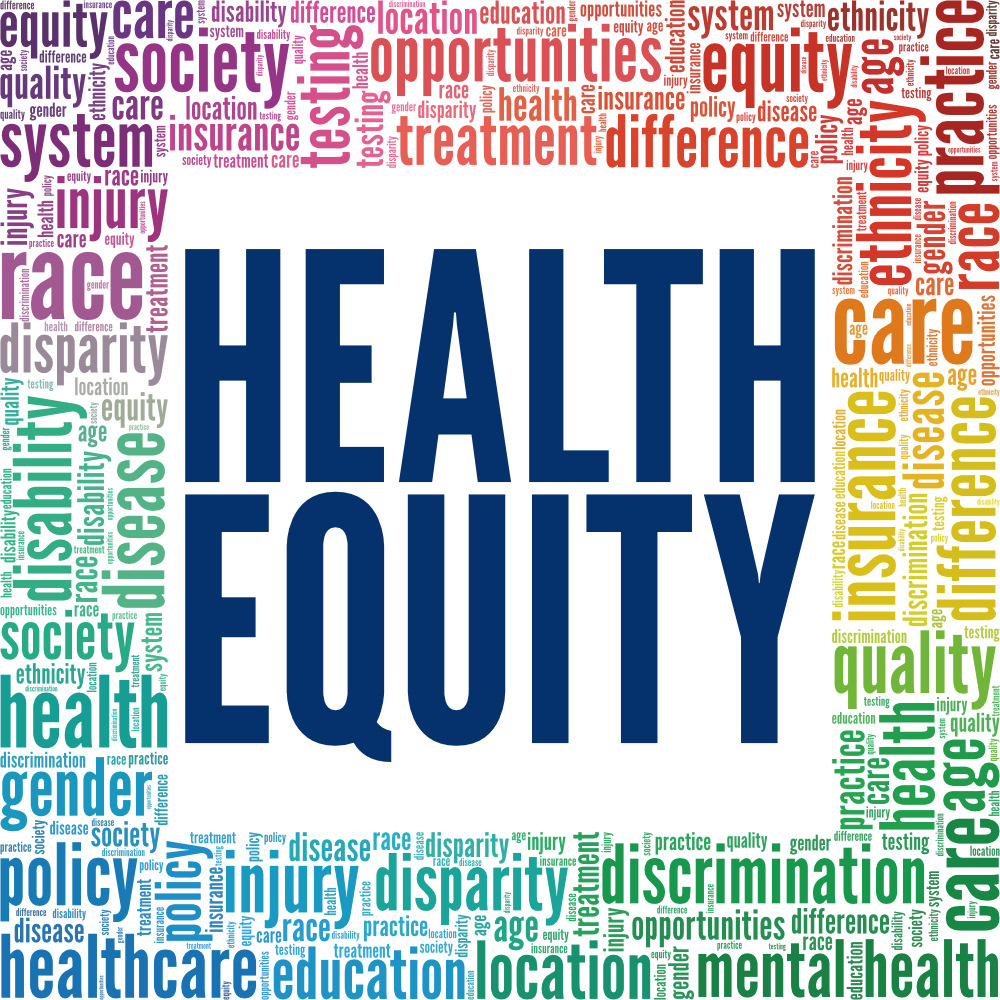By Squire Servance, Founder & Managing Partner of Syridex Bio
Social Justice in Healthcare: The Disparities Signify the Investment Opportunity

The evidence documenting vast disparities across the American healthcare system is plentiful – and at this point, it should surprise no one. Back in 1985, the Department of Health and Human Services published what today is referred to as the Heckler Report, a landmark study that for the first time quantified the gap between health outcomes of white populations and those of minority communities across the United States. Those findings opened the eyes of many to a deeply embedded problem.
Now, almost 40 years later, the discouraging reality is that awareness – at least on its own – has done little to stimulate change. Accelerating progress toward health equity will require unified action by a range of leaders and stakeholders, and it is increasingly clear that the investor community must play a central role. Thus far, the invisible hand of the market has helped to hold health inequities in place; unguided by intentional investor focus on equity, it has channeled capital mostly toward health advancements perceived to have the broadest market size and greatest potential for return.
However, that same market power can be harnessed to drive real progress for underserved communities. Guided by impact-minded investors – that is, investors focused on the double-bottom line of robust financial return and meaningful leaps toward health equity – the invisible hand of the market offers our most promising opportunity for broad and lasting change. Investment in therapies that intentionally serve the underserved lays the foundation for true social justice in healthcare and opens the door to a brighter, healthier global future.
A Systemic Problem: Vast Disparities Drive Health Inequity
In the years since the Heckler Report, subsequent research has more deeply examined the various factors contributing to pronounced health disparities. Thanks to that research, we now know that the nature of those contributing factors ranges from behavioral and socioeconomic to environmental and clinical. For instance, the more obvious location-based variables – like where a patient lives or the extent to which they can access clean water or breathe unpolluted air – are just one type of contributing factor. Family stability, education, employment, and income also correlate to the availability of health resources and to patients’ likelihood to seek necessary treatment. And sadly, we now know that more troubling, interpersonal factors also play a role in health disparities – such as implicit biases that influence which patients receive preventative care or intervening treatments and which patients do not.
Because this wide range of contributing factors has remained largely unmitigated, gaps in health outcomes have only widened since the Heckler Report was published nearly four decades ago. We see those gaps showing up, again and again, with real-life consequences for millions of people. For example, mortality rates for black women suffering from heart disease or cancer vastly diverge from those of white women suffering the same illnesses; mortality during childbirth is also much higher for black women than for white women. And such disparities appear in other traditionally underserved populations, as well: Mexican Americans suffer disproportionately from diabetes; Puerto Ricans are more likely to have asthma; and rural Americans are more likely to die from cancer or a stroke than their urban peers.
Beyond measures of prevalence or mortality, the disparities show up in other ways, too. For instance, divergent screening rates, diagnoses, and treatment plans contribute to the disparate outcomes. Financial distress related to specific diseases, similarly, is not distributed equally: One study found that black cancer patients were about five times more likely to be denied insurance than white patients, and more than twice as likely to face significant financial hardships related to their diagnosis.
And like clockwork, new disparities seem to resurface every time a new outbreak occurs. This pattern has been evident throughout the COVID-19 pandemic, as underserved populations have disproportionately faced a significantly higher risk of hospitalization and death. More recently, it was seen in the protracted response to the monkeypox outbreak, which has disproportionately impacted the LGBTQ+ community.
On a personal level, such health disparities devastate lives and change families forever. On the societal level, these disparities drive vast – and unacceptable – levels of health inequity. By now, the disparities are so deeply embedded that they have made health inequity a truly systemic challenge. Awareness alone only dimensionalizes the problem. Actual progress toward health equity demands a proactive effort on the part of many different stakeholders. Progress will require those stakeholders to recognize that health equity is, indeed, social justice in healthcare – and that everyone deserves the opportunity to live a healthy life.
Pathways to Progress
The vast magnitude of the health inequity problem can only be fully addressed by a wide range of leaders acting in symphony with one another. Because the channels to directly address the behavioral, environmental, and socioeconomic factors that contribute to disparate health outcomes are narrow, each group of stakeholders would need to guide progress within its own specific domain of control.
For example, political leaders would need to expand pharmaceutical industry oversight and regulation, while adopting new laws that support clean air and healthy food access in underserved communities. Non-profit organizations would need to find new ways to fill the socioeconomic gaps that disrupt medical care and access. Pharmaceutical and biotech companies would need to fundamentally change the ways they develop, test, and market new therapies.
Taken together, such proactive leadership by a range of stakeholders would add up to meaningful progress toward health equity. The challenge, of course, is getting these diverse players to act urgently and with coordination. The odds of such prompt and unified action do not seem high – especially on the timeframe that millions of patients so urgently need.
There is, however, another potential pathway to progress that tends to be overlooked: the invisible hand of the market.
Up to this point, market forces have influenced the lagging medical advancements for traditionally underserved, minority communities. Given that most drugs require an average of more than $2.5 billion of funding and can take nearly a decade to achieve FDA approval, the bulk of investment has traditionally coalesced around the compounds with the most potential for use among the largest populations. Investors have tended to hone in on therapies that promise the highest returns at the lowest perceived risk. This general industry focus on the broadest markets has come at the expense of potential treatments that could address diseases most virulent in smaller and underserved communities. Sickle cell disease, sarcoidosis, lupus, and myositis are diseases disproportionately impacting minority communities for which no cure has been developed.
The market landscape is beginning to shift, though. Awareness of the ways that health disparities drive inequity is tipping toward action, most notably among certain capital allocators who see untapped market opportunities to better serve traditionally underserved communities. One of the most compelling of these opportunities is the acquisition of high-quality, in-development therapies from large pharmaceutical and biotech companies by smaller, leaner firms. The large players are constantly shuffling and reprioritizing their development pipeline, and they routinely divest from potentially profitable in-development therapies for a host of reasons – including the simple fact that therapies with narrower patient audiences may not meet the return requirements of a massive company.
For smaller and nimbler operations, such opportunities can be hugely valuable. As a wise sage once said, “The crumbs of an elephant are a feast for an ant.”
At Syridex Bio, we are convinced that a deep sea change across American healthcare is beginning to take hold. Impact-minded investors are awaking to these untapped market opportunities. They are seeing potential to guide the invisible hand of the market in ways that generate both compelling financial returns and meaningful leaps of progress toward health equity. Indeed, rather than representing a barrier to health equity, impact investments in biopharma and life sciences therapies now represent the most fertile ground for directly driving social justice in the healthcare system.
Accelerating Tailwinds Supporting a Market-Based Approach
The addressable market for new therapies that target underserved communities is substantial: it is that pronounced delta between our current systemic inequity and a new, more-level healthcare playing field that would characterize true health equity. Furthermore, beyond all that latent demand, three compelling macro-trends are fundamentally changing the economics for biopharma and life sciences investors in ways that support allocations toward therapies that chip away at the most acute health outcome disparities.
An evolving marketplace: A specialized buyer’s market
The first and most timely of these trends is the recent collapse of the mainstream biotech investment market. The collapse marks a sudden reversal. 2021 was a record -breaking year for U.S. biotech firms, during which 111 companies went public – bringing the two-year IPO total to an even 200 companies. But as of mid-June 2022, more than quarter of the Nasdaq Biotechnology Index’s constituents were trading below their cash value.
Conventional wisdom might assume that such an abrupt shift would cloud the investment opportunity. But the tightening of the market – through the elimination of more speculative capital – instead creates an optimal landscape for specialized investors with committed, impact-minded private capital at their disposal.
Here’s why: the liquidity crunch in the public markets has forced big companies to reprioritize or shelve high-potential therapies assets. That type of ongoing reprioritization has always happened, but it is heightened during periods of liquidity constraint, creating opportunities for investors with value-added, patient capital. In other cases, the crunch is incentivizing drugmakers to lean on business development initiatives or sales of intellectual property as a new source of funding. Either way, the marketplace dynamics increasingly favor long-term, patient capital deployed by specialists with deep knowledge of these changing opportunities.
An evolving ecosystem of lower costs for new therapy development
A second, critically important macro-trend is the increasingly decentralized and technologically-advanced ecosystem that is lowering development costs for new therapies. This trend, already underway for several years, was accelerated by the COVID-19 pandemic, when the clinical trial industry was forced to transition to a hybrid in-person/remote model. Compared to fully on-site trials, the decentralized approach is considerably less time-consuming and costly. This change alone has catalyzed related shifts that collectively help to eliminate bottlenecks that previously limited the breadth and scope of clinical trials.
For one, a decentralized model allows researchers to increase diversity through enhanced patient recruitment across a wider range of demographic groups and to increase overall engagement through digital channels that reach a wider variety of communities. The old geographic constraints, which previously limited trials to more homogenous populations clustered around specific trial sites, are also eliminated.
Equally important are new technological advances – ranging from wearable health monitors and patches that can collect vital signs to remote diagnostic devices and even ingestible devices – that can monitor patients, measure clinical endpoints, and provide instantaneous reactions to new treatments or compounds. These advances effectively eliminate the friction and burden of trial participation. According to one study conducted prior to the pandemic, approximately 76% of patients favored virtual trials versus traditional in-clinic assessments; 80% were more likely to participate in trials that utilize mobile technology, such as telehealth, home care, or remote-monitoring devices. Ultimately, these trends will lower development costs and enhance diversity by making it easier for a wider group of patients to participate.
Given the evolving landscape, contract research organizations have also stepped up business development efforts to secure joint ventures and launch new product offerings; these shifts have translated into greater accessibility. And other technological advances, such as blockchain capabilities, are accelerating the extent to which researchers and investigators can collect, analyze, and share data and findings.
All told, the increasingly decentralized, high-tech model for clinical trials is driving changes in scalability, efficiency, and patient diversity that will not be reversed. In the years ahead, this evolution should have a meaningful impact in terms of speeding up clinical trials and lowering the costs to develop new therapies – two highly significant considerations for investors in pre-revenue biotech companies.
An evolving regulatory lens, altering the commercial landscape
The third meaningful tailwind for market-based health equity approaches is regulatory. While the debate around universal healthcare tends to fall along party lines, the effort to lower drug prices for the most expensive therapies has gained bipartisan momentum in recent years. In fact, the Inflation Reduction Act (IRA) of 2022 contains provisions that will give the government the right to negotiate prices for a small subset of high-cost drugs covered under Medicare.
Several elements of the IRA are likely to shape commercialization strategies for the foreseeable future, such as the introduction of drug-reference pricing. One possible outcome is that drug makers will begin to diversify their efforts to go after stratified therapy niches, rather than swinging for the fences on the next massive blockbuster. This regulatory environment and the evolving sentiment among political leaders will support impact-minded health equity investment over the coming years.
Multiple Entry Points for Capital Investment, One Overarching Goal
Given the breadth of opportunity for accelerating health equity, there is no shortage of entry points available to investors. The “venture creation” model – that is, serially spinning out and building sustainable, stand-alone companies around new ideas, products, or technologies – is perhaps the strongest of these entry points. This model has proven itself effective to create a balanced portfolio that combines various sub-classes within drug development, while minimizing downside risk or capital erosion. While venture creation flips traditional venture capital investments on their head – backing an idea first, and then building a business around it – this portfolio model of biotech investing also lends itself to an operational skillset, in which value creation is as critical as investment selection.
From an investment perspective, venture creation also represents a fundamentally better tactic for fueling research and development of overlooked medical therapies. The single-asset company structure is ideal for facilitating the dedicated focus necessary to take the most attractive candidates from incubation to commercialization.
For long-term investors, other benefits are equally important. McKinsey & Co., for instance, focuses on the relative stability of the venture creation model compared to more traditional high-risk/high-reward bets in early-stage venture funds. The consultant research underscores the value of accessing hard-to-reach niches within biotech and highlights the potential for abandoned-asset arbitrage. Finally, McKinsey notes that a potential first-mover advantage may also be available, as the model gains adoption among “new classes of investors”: fund investors who previously didn’t have the requisite risk appetite to invest in biotech.
All that said, a more traditional private equity strategy can also be an effective entry point in some cases. Flexibility, along with an operator’s lens, can allow PE investors to be opportunistic in the acquisition of assets at various phases of drug development. Then, PE investors can create value through funding clinical trials and, ultimately, monetize that value through strategic sales. While the venture creation strategy may enjoy more acyclical attributes, a more traditional PE approach can be particularly appealing during market dislocations.
Leveraging the Market to Accelerate Health Equity
In either case, these investment strategies provide investors with effective tools to address the most acute disparities across the healthcare system, while earning competitive risk-adjusted returns in the process. Even as the macroeconomic backdrop remains in flux, healthcare stands out as an uncorrelated safe haven – particularly in the private markets. After all, the global pharmaceuticals market alone is projected to grow by 8% annually to reach $1.7 trillion by 2025. The market opportunity for health equity progress is embedded in that growth, thanks to the deep disparities that will surely come with it in our legacy healthcare system.
More importantly, as we look to the years ahead, an impact-minded investment approach can offer meaningful health improvements for traditionally underserved communities. By guiding the invisible hand of the market to generate leaps of progress on health equity, we have the potential to change lives and restore hope. In this way, investors who channel long-term, patient capital to potentially transformative therapies are not merely gaining access to a compelling alpha opportunity, they are actively driving social justice in healthcare to produce benefits that won’t be measured over years or decades – but over generations. These investors are putting the powerful tool of their capital behind the simple, indisputable belief that everyone deserves the opportunity to live a healthy life.

